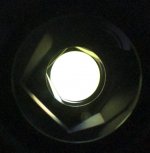albatrosviajero
Well-known member
Hello,
I have the opportunity to buy one of the models Habicht classic Porro prism., The 8x30 or 10x40.
for all round binocular, handy, light and good image (good contrast and definition) which of the two models work better?
I'm a big fan of binoculars Porro prism !!
What used to take for birding, terrestrial views, casual astronomy, there is a great difference between the two Habicht ??
Thanks for your advice and insights !!
regards
Al.
I have the opportunity to buy one of the models Habicht classic Porro prism., The 8x30 or 10x40.
for all round binocular, handy, light and good image (good contrast and definition) which of the two models work better?
I'm a big fan of binoculars Porro prism !!
What used to take for birding, terrestrial views, casual astronomy, there is a great difference between the two Habicht ??
Thanks for your advice and insights !!
regards
Al.







